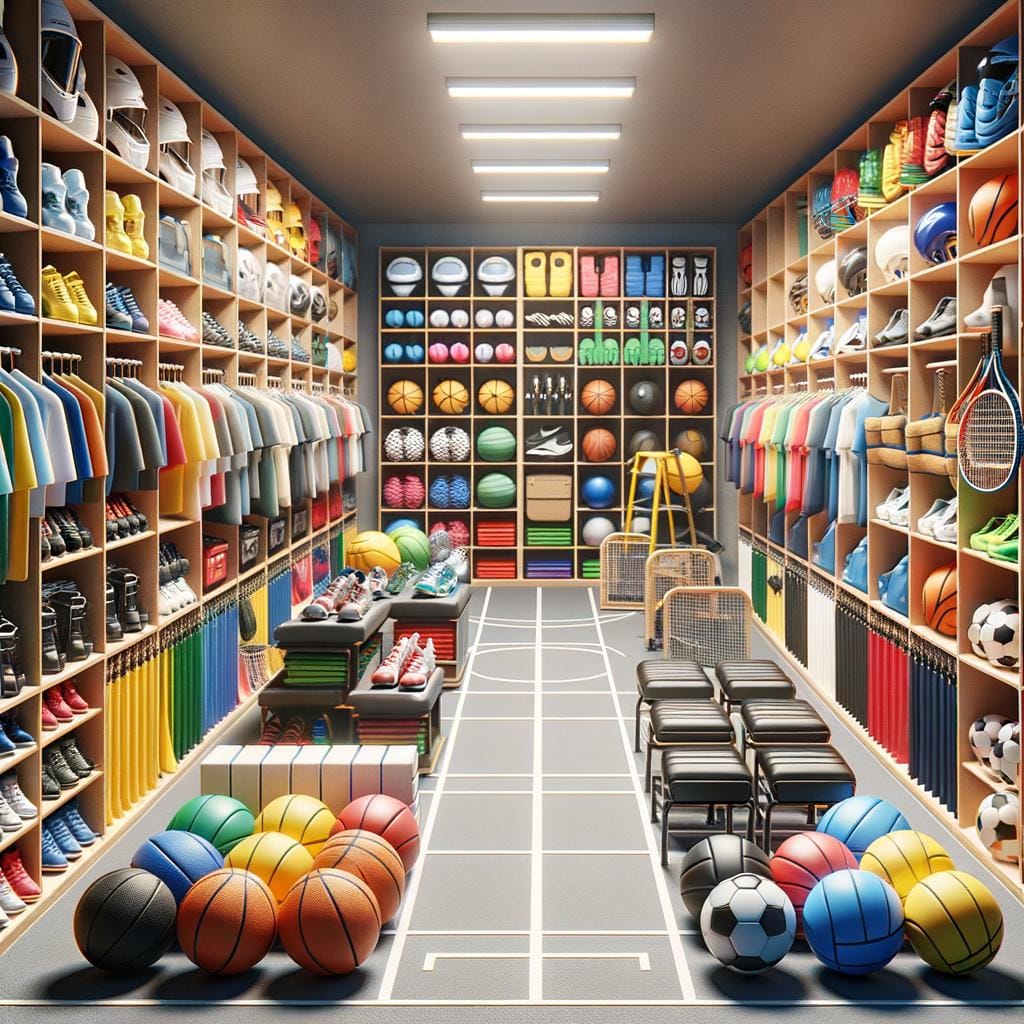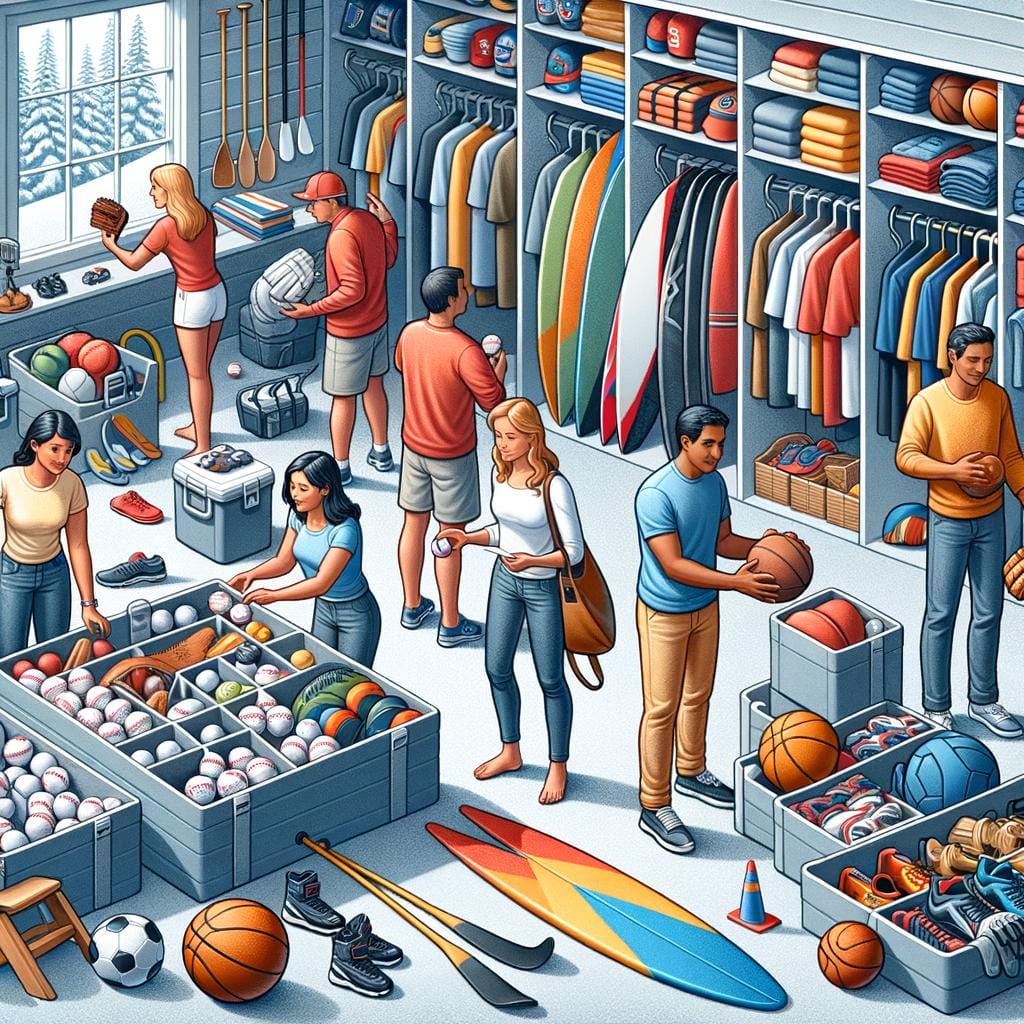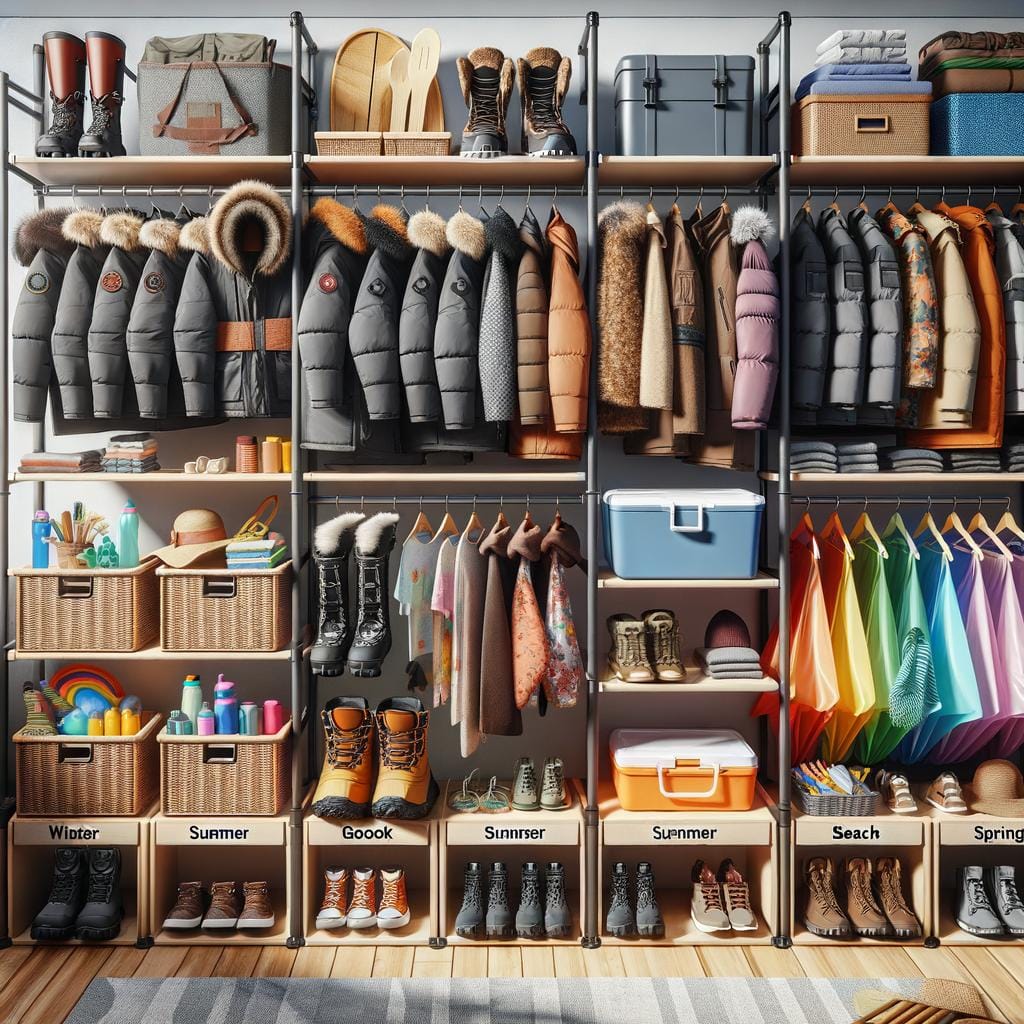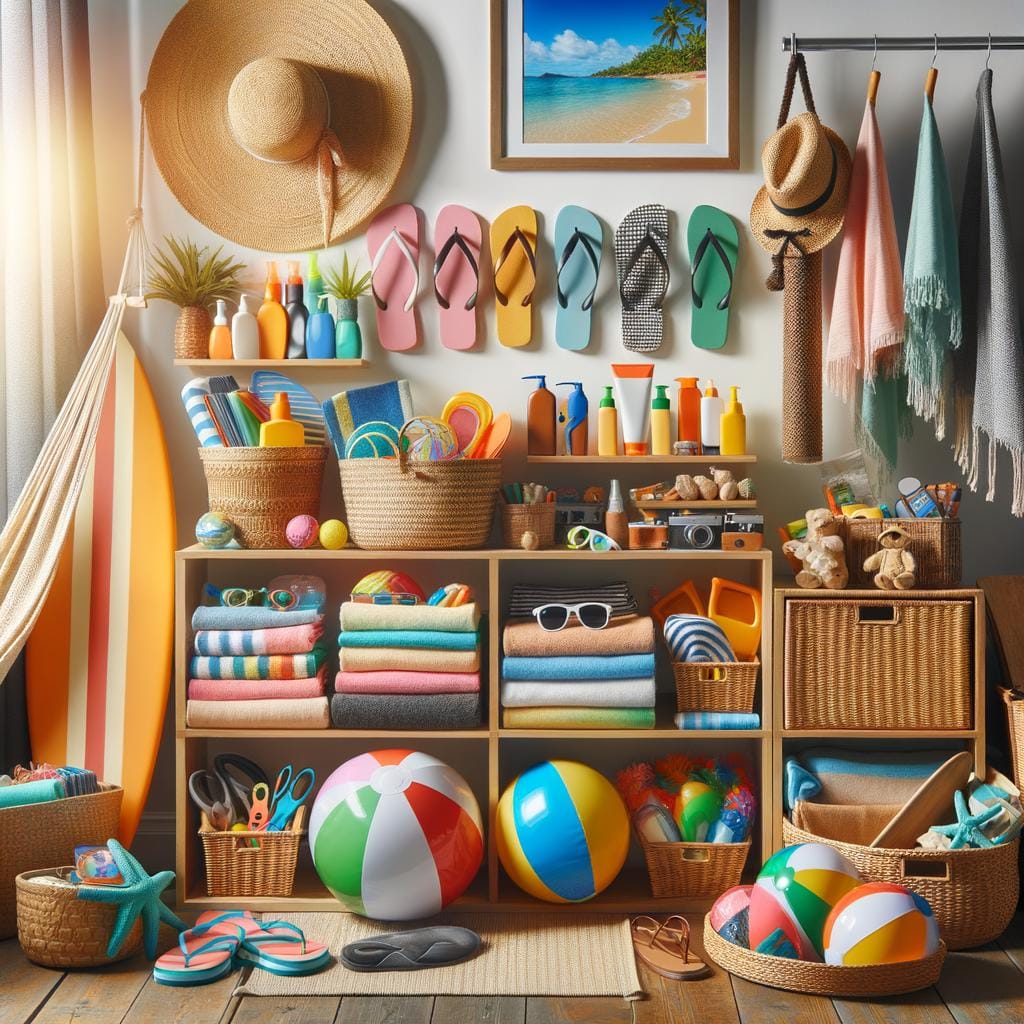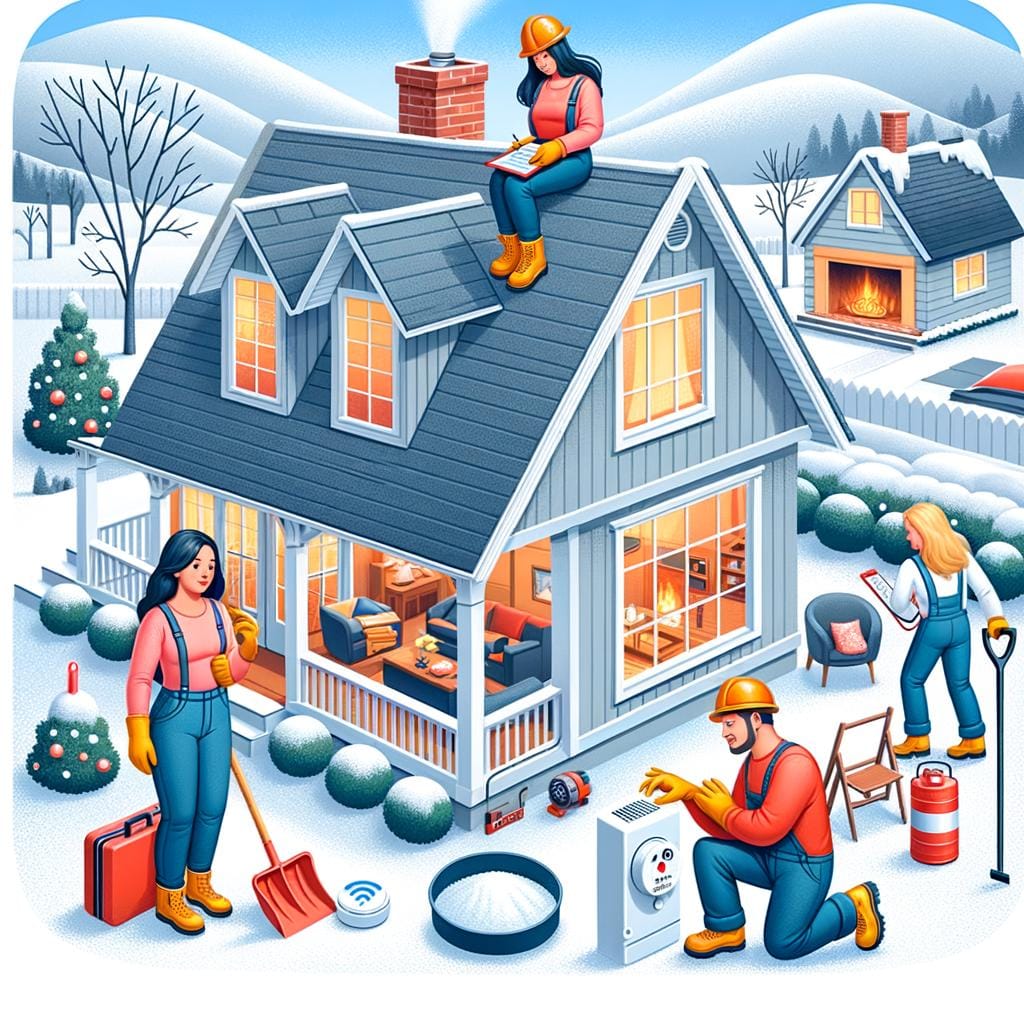Proper sports equipment storage is crucial for every athlete, whether they are a casual player or a professional competitor. The way gear is stored can impact its longevity, performance, and even the athlete’s safety. Without adequate storage solutions, sports equipment can become damaged, pose a risk of injury, or develop unpleasant odors.
Improper storage of sports equipment can lead to consequences such as damaged gear and an increased risk of injuries during play. Storing equipment in a haphazard manner can result in items being crushed, bent out of shape, or even lost. Additionally, not cleaning gear before storing it can lead to the growth of mold, mildew, and bacteria that pose health risks to athletes.
To ensure that sports equipment remains in optimal condition and ready for use when needed, athletes must organize their gear effectively. This involves utilizing hooks, bins, shelving units, and other storage solutions to keep equipment neatly stored and easily accessible. By implementing proper organization techniques, athletes can save time searching for gear and reduce the likelihood of damage or injury due to improperly stored equipment.
The Consequences of Improper Storage
Improper storage of sports equipment can have detrimental effects on both the gear itself and the athletes using it. When sports equipment is not stored correctly, it is more prone to damage, which can significantly impact its performance and longevity.
For example, leaving gear lying around haphazardly or cramming it all into a small space can lead to dents, scratches, and other forms of wear and tear. This not only diminishes the quality of the equipment but also compromises the safety of athletes when using damaged gear.
In addition to damaging the equipment, improper storage practices can also increase the risk of injuries to athletes. For instance, if protective gear such as helmets or pads are not stored in a designated spot where they can easily be found and accessed, athletes may forget or neglect to use them during training or competitions.
This puts them at a higher risk of injury during physical activities. Furthermore, cluttered storage areas create tripping hazards that can lead to accidents and injuries while athletes are trying to retrieve their equipment.
To avoid these consequences, athletes must prioritize proper sports equipment storage practices. By implementing organization systems and investing in quality storage solutions, athletes can ensure that their gear remains in good condition and readily available when needed. Whether utilizing hooks for hanging items, bins for smaller accessories, or shelving units for bulkier gear, having a designated place for each item reduces the chances of damage and promotes safety during sports activities.
Tips for Organizing Sports Equipment
Proper organization of sports equipment is crucial for athletes to easily access their gear and prolong the lifespan of their equipment. Utilizing hooks, bins, and shelving systems can make a significant difference in keeping gear organized and in good condition.
Installing Hooks for Equipment
One efficient way to organize sports equipment is by installing hooks on walls or inside closets. By hanging items such as helmets, bags, or even rackets on hooks, athletes can free up floor space and prevent items from getting damaged. Additionally, using different sizes of hooks can accommodate various types of equipment.
Storing Gear in Bins
Bins are another practical storage solution for organizing sports equipment. Labeling bins according to each sport or type of gear can help athletes easily locate what they need. Clear bins are particularly useful as they allow athletes to see the contents without having to open each bin, saving time and effort during practice or game preparation.
Utilizing Shelving Systems
Shelving systems provide a versatile option for storing sports equipment of different shapes and sizes. Athletes can use shelves with adjustable heights to accommodate taller items like hockey sticks or golf clubs. By categorizing gear on shelves based on frequency of use or type of sport, athletes can streamline their storage process and maintain a clutter-free environment.
Properly organizing sports equipment through the use of hooks, bins, and shelving not only enhances accessibility but also minimizes the risk of damage and injury caused by misplaced gear. Whether in a garage, basement, or apartment, implementing these storage solutions promotes efficiency and ensures that athletes are ready for their next game or training session.
Best Practices for Cleaning Sports Equipment Before Storage
Properly cleaning sports equipment before storing it is crucial for maintaining its quality and extending its lifespan. Neglecting to clean gear can lead to the buildup of dirt, sweat, and bacteria, which not only affects the performance but also poses health risks to athletes. By following some best practices for cleaning sports equipment before storage, athletes can ensure that their gear remains in top condition for longer periods.
To effectively clean sports equipment before storage, consider the following tips:
- Start by wiping down surfaces with a damp cloth and mild soap to remove any dirt or grime.
- For items like helmets or pads, use disinfectant wipes or sprays to kill bacteria and eliminate odors.
- Machine-washable items like jerseys or socks should be laundered according to care instructions on the label.
Additionally, don’t forget about shoes and other footwear. These should be thoroughly cleaned and dried to prevent mold and bacteria growth. Investing in a shoe deodorizer can also help in keeping them fresh for longer periods. By taking the time to clean sports equipment properly before storing it, athletes can ensure that their gear remains in good condition and ready for the next game or practice session.
Solutions for Small Spaces
Living in an apartment with limited space can present a challenge when it comes to storing sports equipment. However, with some creativity and strategic planning, it is possible to find efficient solutions for sports equipment storage that will keep your gear organized and easily accessible. Here are some creative ideas for maximizing storage in small spaces:
- Utilize vertical space: Install hooks or pegboards on the walls to hang sports equipment such as helmets, backpacks, and even bicycles. This not only saves floor space but also keeps your gear off the ground and easy to find.
- Invest in multi-functional furniture: Look for furniture pieces that offer hidden storage compartments, such as ottomans or benches with built-in storage. These can be used to store smaller sports items like gloves, balls, or resistance bands.
- Use under-bed storage: Purchase storage bins or containers that can slide easily under your bed to store sports shoes, yoga mats, or other flat gear. This is a great way to make use of unused space while keeping your equipment organized.
In addition to these creative storage ideas, apartment dwellers should also consider incorporating portable shelving units or over-the-door organizers to make the most of vertical space. By utilizing every available inch of space in your apartment and implementing smart storage solutions, you can ensure that your sports equipment is neatly organized and well-maintained despite living in a small area.
Remember, efficient sports equipment storage not only helps prevent clutter but also contributes to maintaining the longevity of your gear and ultimately enhancing your overall athletic performance.
How to Prevent Odors and Mildew in Stored Sports Gear
Sports enthusiasts understand the importance of keeping their sporting equipment in top condition. One crucial aspect of sports equipment storage is preventing odors and mildew from developing in stored gear, which can not only affect the equipment but also impact an athlete’s performance. The buildup of odors and mildew is a common issue, especially for items like gym bags, shoes, helmets, and protective padding that are often exposed to sweat and moisture during use.
To combat odors and prevent mildew from forming on stored sports gear, athletes should adopt a regular cleaning routine. After each use, it is essential to wipe down equipment with a damp cloth to remove any sweat or dirt. For items that are machine washable, such as clothing and certain types of pads, make sure to follow the manufacturer’s instructions for proper cleaning. Additionally, consider using specialized cleaning products designed specifically for sports equipment to effectively eliminate odors.
Another effective method to prevent odors and mildew in stored sports gear is proper ventilation. Ensure that all equipment is thoroughly dry before storing it away.
Allow items like shoes and gloves to air out in a well-ventilated area after each use before placing them in storage bins or closets. For larger items like hockey or lacrosse pads, consider hanging them on hooks or racks with good airflow to accelerate the drying process and reduce the risk of mildew growth.
| Prevention Method | Benefits |
|---|---|
| Regular Cleaning | Eliminates sweat and dirt build-up |
| Proper Ventilation | Reduces moisture levels to prevent mildew |
Investing in Quality Storage Solutions
One of the key benefits of using durable equipment racks for sports equipment storage is the efficient use of space. These racks are designed to maximize storage capacity while taking up minimal floor space.
Athletes with limited storage areas, such as small apartments or garages, can greatly benefit from utilizing these racks to keep their gear neatly stored and easily accessible. Additionally, durable equipment racks offer a systematic approach to organizing sports equipment, making it easier for athletes to find the gear they need quickly before heading out for practice or a game.
Furthermore, durable equipment racks contribute to the safety of athletes by keeping their gear off the floor and out of harm’s way. Storing sports equipment haphazardly on the ground not only poses a risk of damage but also increases the likelihood of accidents or injuries.
With durable equipment racks, athletes can store their gear in an organized manner, minimizing clutter and reducing the risk of tripping or falling over misplaced items. Overall, investing in quality storage solutions like durable equipment racks is a wise choice for every athlete looking to protect their gear and optimize their performance on the field or court.
| Benefits | Features |
|---|---|
| Efficient use of space | Maximizes storage capacity |
| Safety for athletes | Keeps gear off the floor |
DIY Projects for Sports Equipment Storage
Do-it-yourself (DIY) projects for sports equipment storage can be a fun and budget-friendly way to create customized solutions that fit your specific needs. Building your own storage system allows you to maximize space, organize gear efficiently, and protect equipment from damage. Whether you have a dedicated sports room or just a small corner in your garage, taking on a DIY project can help you stay organized and keep your gear in top condition.
One popular DIY project for sports equipment storage is building a custom rack or shelving unit. This allows you to design a storage solution that accommodates different types of gear, such as balls, bats, helmets, and pads.
By utilizing materials like PVC pipes, wood planks, or metal bars, you can create a sturdy and functional storage system that keeps everything neatly organized and easily accessible. Additionally, adding hooks or hanging baskets can help maximize vertical space and keep items off the floor.
Another creative DIY idea for sports equipment storage is repurposing old furniture or household items. For example, an old bookshelf can be transformed into a storage unit for shoes and smaller items, while a pegboard mounted on the wall can hold rackets, sticks, and other equipment with ease.
By thinking outside the box and using everyday items in new ways, you can create unique storage solutions that not only keep your sports gear tidy but also add a decorative touch to your space.
When embarking on DIY projects for sports equipment storage, it’s essential to consider the specific needs of the athletes in your household. Make sure the storage system is easily accessible for everyone using it, whether they are kids or adults.
Additionally, regularly assess the functionality of the setup to ensure it continues to meet your storage requirements as your gear collection grows. By investing time and effort into building your own storage system, you can take control of cluttered spaces and enjoy the benefits of organized sporting gear that is ready for play at any time.
Maintaining and Rotating Equipment
Properly maintaining and rotating sports equipment is crucial to ensuring its longevity and optimal performance for athletes. By taking the time to care for and rotate equipment regularly, athletes can not only extend the lifespan of their gear but also improve their own performance on the field or court.
One key aspect of maintaining sports equipment is to clean it regularly before storing it. Cleaning gear such as helmets, pads, gloves, and even shoes can help prevent odors, bacteria buildup, and deterioration over time. Utilizing gentle cleaners and following manufacturer’s instructions can go a long way in preserving the quality of the equipment.
Additionally, athletes should make it a habit to rotate their equipment to prevent overuse or wear in specific areas. For example, alternating between two or more pairs of shoes for different practices or games can help distribute the wear and tear evenly.
By rotating equipment strategically, athletes can ensure that each piece remains in top condition for longer periods of time. Proper maintenance and rotation of sports equipment ultimately play a significant role in an athlete’s success on the field by ensuring that they have reliable gear that enhances their performance.
Conclusion
Proper sports equipment storage is not just a matter of convenience, but it directly impacts an athlete’s success and performance. By neglecting the organization and care of sports gear, athletes run the risk of damaging their equipment and even jeopardizing their safety on the field. This article has highlighted the various ways in which athletes can benefit from prioritizing sports equipment storage, from preventing injuries to prolonging the lifespan of their gear.
One of the key takeaways from this discussion is the emphasis on utilizing quality storage solutions such as durable equipment racks. Investing in these types of storage systems can not only make it easier for athletes to keep their gear organized but also protect them from unnecessary wear and tear. Additionally, by incorporating DIY projects for sports equipment storage, athletes can customize their storage solutions to fit their specific needs and space constraints.
In conclusion, every athlete should recognize the crucial role that proper sports equipment storage plays in their overall performance and well-being. By following the tips and strategies outlined in this article, athletes can ensure that their gear remains in top condition, ready for action whenever they hit the field or court.
Whether you have a spacious garage or are living in a small apartment, there are creative solutions available to help you maintain your sports equipment effectively. Prioritizing sports equipment storage is not just about organization; it’s about setting yourself up for success as an athlete.
Frequently Asked Questions
How Do You Store Sports Items?
I store sports items by utilizing storage bins, shelves, and racks specifically designed for each type of equipment. For smaller items like balls, I prefer to keep them in labeled bins to easily find what I need.
How Do You Hang Sports Equipment on the Wall?
When hanging sports equipment on the wall, I use hooks, brackets, or specialized racks depending on the item. For example, bikes can be hung using wall-mounted bike racks while tennis rackets can be displayed using hooks.
How Do You Store Football Equipment?
Storing football equipment involves keeping helmets, pads, and cleats organized in designated spaces. I use a shelving unit with cubbies for helmets and pads, while cleats are placed in a ventilated container to prevent odors and maintain their condition.

Hello, I’m April Denton, your go-to expert for all things home decluttering and organization. With over a decade of experience helping individuals transform their living spaces into serene, clutter-free sanctuaries, I am passionate about the life-changing benefits of decluttering. My journey into the world of organization began out of necessity, juggling a busy career and a bustling household. I quickly realized that a well-organized home was the key to a more balanced, stress-free life.

